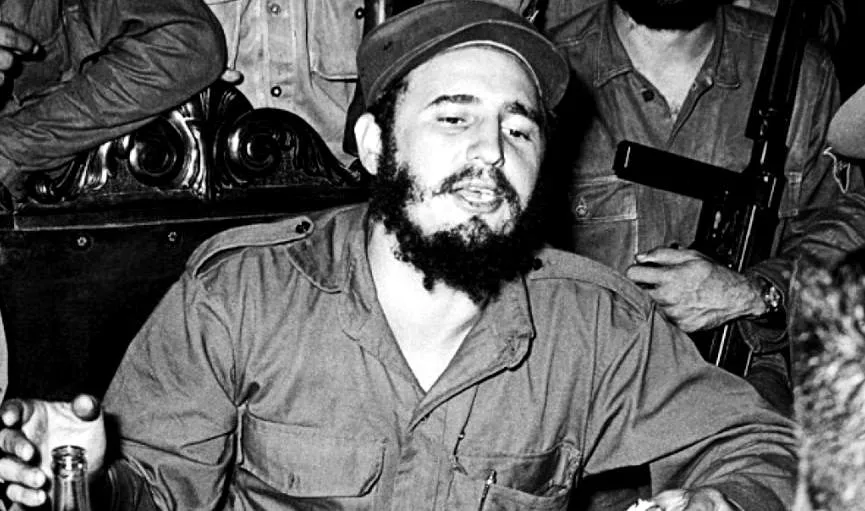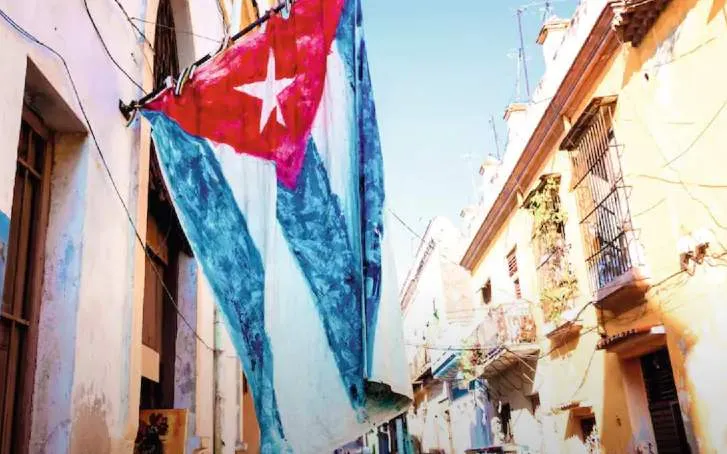Spy on the Lam: The Curious Case of US Double Agent Marta Rita Velazquez
Marta Rita Velázquez is suspected of being a talent-spotter for Cuban intelligence while working as a US State Department lawyer - a double agent passing secrets to Havana in a case linked to America’s ‘Most Dangerous’ spy Ana Montes.
Yet while Montes pleaded guilty, served more than 20 years in prison, and was released in early 2023, Velázquez fled. She married a Swedish Foreign Office official and curiously has not faced US justice.
Like an artist's brush, espionage paints a landscape of ever-shifting grays, however. Extradition from Sweden can be tricky, as the Julian Assange case shows, but the Velázquez case also begs many questions about why she remains free and whether Velázquez may have been legally wrong but morally right.

Who is Marta Rita Velázquez?
Marta Rita Velázquez was born in Puerto Rico in 1957 and attended Princeton and John Hopkins where she developed a close friendship with fellow Puerto Rican student Ana Montes. It was back in the ‘80s and the women shared similar perspectives on US policies in Nicaragua, particularly regarding allegations of an undeclared US war against the left-wing Sandinista movement. They had other bonds as well: their parents were both advocates for Puerto Rican independence and they shared a quest for racial equality.
In her senior thesis at Princeton, Velázquez reportedly praised Fidel Castro for following ‘the wisest’ race relations policy ‘ever taken by a Cuban leader’.
Whether Marta Rita was an idealistic student or a hardened spy at that stage is unclear. She allegedly introduced Montes to a Cuban intelligence officer in New York City, an official of the Cuban Mission to the US. "As Hispanics, they were a racial minority in the US and Cuba's spy services artfully exploited race relations as a recruitment tool," former DIA analyst Chris Simmons writes in Castro's Nemesis.
Simmons describes Marta Rita as sincere, passionate, and naive in supporting the rights of women, minorities, and other victims of perceived discrimination. "These traits made her a spy-handler's dream candidate.”
Still in their 20s, Velázquez accompanied Montes on a clandestine trip to Cuba to receive spycraft training in 1985 and helped Montes land a job as an intelligence analyst for the US Defense Intelligence Agency.
Montes’ new job gave her access to classified information and she served as a Cuban agent until her arrest in 2001. During Montes’ tenure at the DIA, she would disclose the identities of US intelligence officers and provide other classified national defense information to Cuba.

Velázquez’s career comes to an abrupt halt
Like Montes, Velázquez had earned an impressive collection of degrees from America’s Ivy League universities - an undergraduate at Princeton, a law degree from Georgetown, and a Master’s from Johns Hopkins. After university, Velázquez held Top Secret security clearance and was posted to US Embassies in Nicaragua and Guatemala but her high-flying career came to an end with Montes’ arrest in 2001 and reports that Cuba’s DIA spy was cooperating with US authorities in exchange for a reduced sentence.
Was Ana Montes her only recruit? The DoJ indictment mentions other spies Velázquez may have also groomed through the world of academia, a fertile environment. Some foreign governments pressure legitimate students to report information to intelligence officials, often using the promise of favors or threats to family members back home, according to Jose Cohen, a former lieutenant in the Cuban Interior Ministry who defected from Cuba in 1994. It's not clear how or who recruited Velázquez but the FBI believe she cooperated with CuIS.
“Velázquez allegedly helped the CuIS (Cuban Intelligence Services) spot, assess and recruit US citizens who occupied sensitive national security positions or had the potential of occupying such positions in the future to serve as Cuban agents,” the indictment says.
"The brand new social experience where you activate your gaming skills as you train like a spy."
- TimeOut
Take on thrilling, high-energy espionage challenges across different game zones.


Velázquez: a life on the run
While Velázquez climbed the ladder as a US civil servant, the FBI believes she also received instructions from Cuban intelligence through encrypted, high-frequency broadcasts and meetings outside of the US - but much of the story is told from only one point of view. Velázquez hasn’t returned to the US to tell her side of the story. Instead, she remained abroad and wed an official from Utrikesdepartementet (Sweden's Ministry of Foreign Affairs). The marriage was confirmed by the Swedish ministry to The Local media in 2013 when the US unsealed its indictment.
If convicted, Velázquez faces a potential life sentence for conspiring to transmit information relating to US national defense to Cuba. Although the DoJ indictment said the US was aware that Velázquez was living in Stockholm in 2013, there doesn’t appear to be any movement to pursue her extradition. (The DoJ did not respond to SPYSCAPE questions submitted through its online portal.)

Is espionage a political offense?
Although Marta Rita’s left leanings are clear, the case for Velázquez’s extradition to the US is not. Sweden’s extradition agreement with the US prohibits extradition on the basis of a political offense or an allegation connected to a political offense. The phrase ‘political offense’ is not defined, however. Swedish courts have reportedly determined that espionage constitutes a political offense yet it may depend on the details of each case.
At the time Velázquez was indicted, it was unusual for a woman to be convicted of being a double agent. Only 18 of the 209 US spies caught were women in a period stretching almost 70 years up to 2015, according to Expanding Spectrum of Espionage by Americans, 1947-2015. “More men than women engage in risk-taking,” the report found. “Men also have more opportunity for espionage. Four times as many men are in government and military jobs that grant access to national defense information and to highly classified secrets.”
As for Marta Rita's friendship with Ana Montes, the self-confessed Cuban spy readily gave up the name 'Marta Rita Velázquez' as the Cuban operative who recruited her back in the ‘80s, Simmons writes in Castro’s Nemesis. Marta Rita carried on working at her US government job in Guatemala for a short time after Montes’ arrest and it appears there was no love lost between them in their later years.
"I was arrested last September [2001],” Montes said. “If Marta is stupid enough to be around after all this, she deserves what she gets."
SPYSCAPE+

Join now to get True Spies episodes early and ad-free every week, plus subscriber-only Debriefs and Q&As to bring you closer to your favorite spies and stories from the show. You’ll also get our exclusive series The Razumov Files and The Great James Bond Car Robbery!


Gadgets & Gifts
Explore a world of secrets together. Navigate through interactive exhibits and missions to discover your spy roles.
Your Spy Skills
We all have valuable spy skills - your mission is to discover yours. See if you have what it takes to be a secret agent, with our authentic spy skills evaluation* developed by a former Head of Training at British Intelligence. It's FREE so share & compare with friends now!
* Find more information about the scientific methods behind the evaluation here.


Stay Connected
Follow us for the latest
TIKTOK
INSTAGRAM
X
FACEBOOK
YOUTUBE